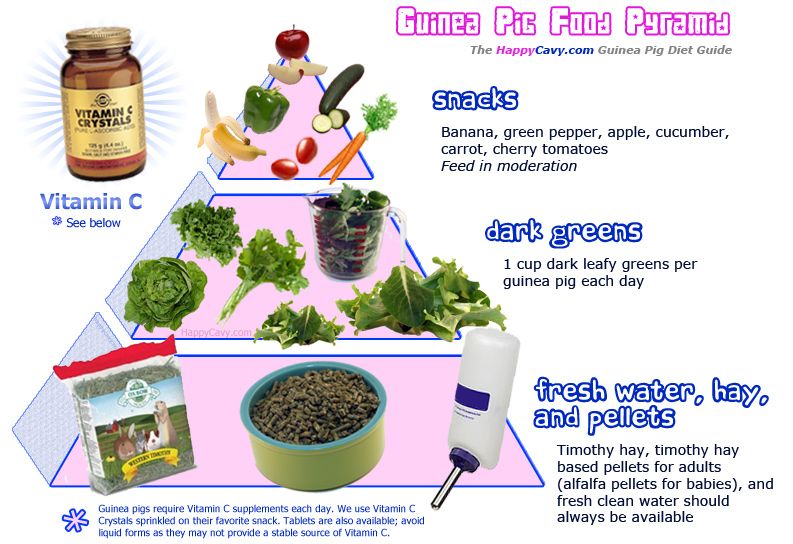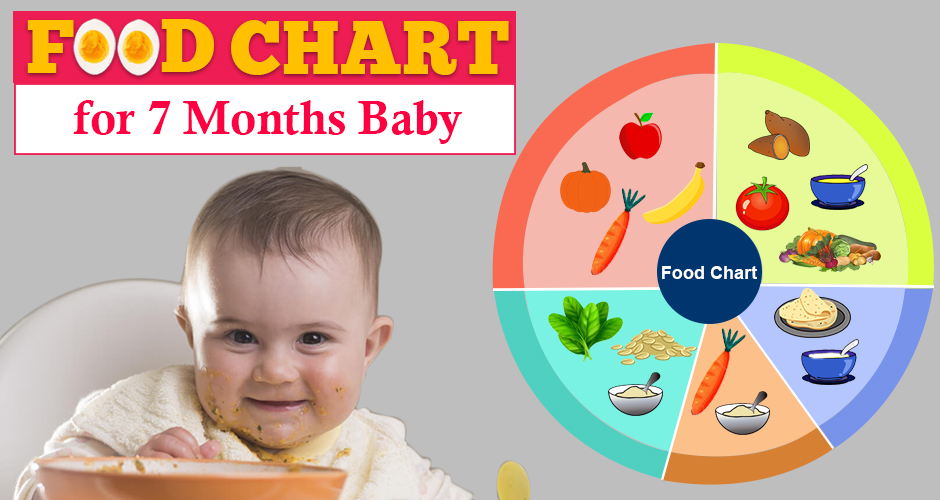What to do if rabbit is not feeding babies
Momma Stopped Caring, How to Take Care of Baby Bunnies?
Written by The Rabbit Hole Hay Team
Check the Conditions Thoroughly Before You Interfere
First off, there are some things you need to check to ensure that the mother has indeed stopped caring for her babies. Below is some advice from a professor at University of Miami Biology Department, Dana Krempels in her article Care and Feeding of Orphaned Domestic Rabbits.
“Unless the mother rabbit is known to be dead, there is a good chance that she is feeding her babies, even if she seems to be ignoring them. A mother rabbit does not constantly tend to her babies the way a mother carnivore does. Rabbit mamas feed their babies only twice per day, and then leave them alone. This is normal and natural: in the wild, a mother rabbit not in the process of feeding her offspring stays as far away from the nest as possible to avoid attracting predators to her babies.
If mama rabbit seems to be "ignoring" her litter, check their condition before you interfere. If the babies' tummies are round and full-looking (you sometimes can see a whitish patch where the milk-filled stomach shows through the thin skin of the belly), they are warm, their skin is a healthy, dark pink, and not overly wrinkled, and they are sleeping calmly in the nest, then mama is feeding them. If the babies are very wrinkled, cold, bluish in color, have shrunken bellies, and perhaps are even crawling around looking for mama (instead of nest-sleeping, as a well-fed baby should), then you may have to intervene."
Next, you will try to encourage the mother to nurse her babies. You do this by holding your rabbit over her babies so they have a chance to nurse. Stroke your rabbit so that she is calm. If the babies have a chance to nurse, this will most likely fix the problem. Just continue to monitor if the babies are getting fed.
If the mother rabbit is very ill, is dead or is being aggressive toward her babies, you will most likely have to remove her and care for the babies on your own.
Feeding Baby Bunnies
Feeding baby bunnies is harder than one may think, the slightest drop of formula inhaled by them can sit in their lungs and give them fatal pneumonia within a few hours. Along with feeding baby bunnies, you also have to groom and stimulate their bodies so that they go to the bathroom. Many newborn animals cannot urinate/defecate on their own. The mother rabbit often helps in the process when she grooms them.
If you’re still up for the adventure of raising a baby bunny without the help of its real mom, I suggest you read the rest of the article mentioned above, “Care and Feeding of Orphaned Domestic Rabbits.” It goes into detail about how to really take care of a baby rabbit, feeding, bathroom issues and weaning included! You can also download our eBook Human's Guide to Feeding Baby Bunnies to find what formula to give your baby bunnies.
Seek Professional Help
If you do not know how to care for baby bunnies and do not feel confident in your ability to do so, please do not attempt to feed them.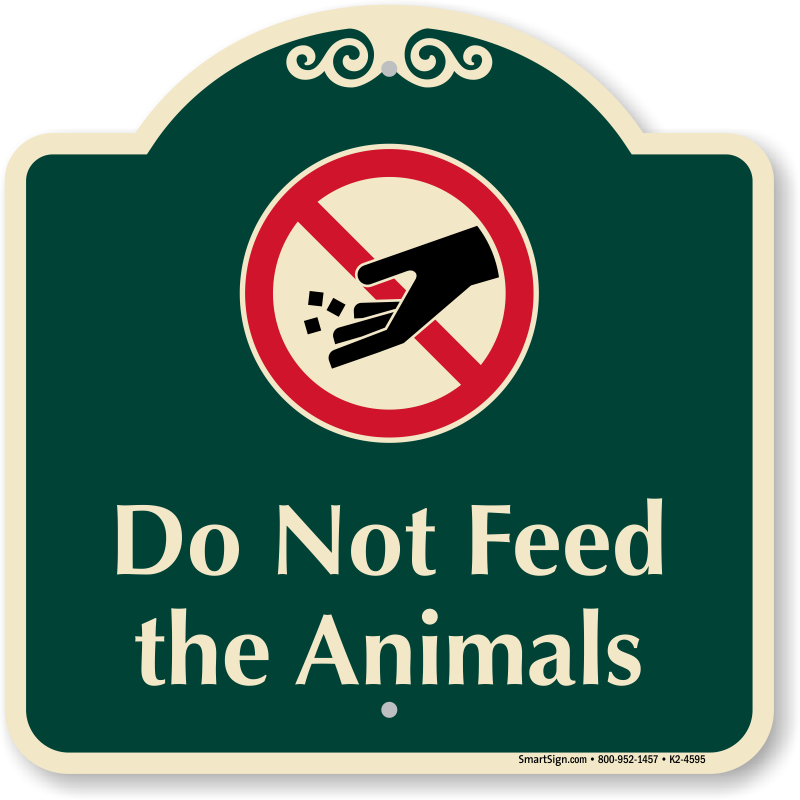 Taking care of a baby bunny is complicated and there are a lot of things that can go wrong. Feeding them too much milk, not making them go to the bathroom or having them sleep at the wrong temperature can result in them becoming very sick or not making it. There are many aspects that can lead to things going wrong with baby bunny care.
Taking care of a baby bunny is complicated and there are a lot of things that can go wrong. Feeding them too much milk, not making them go to the bathroom or having them sleep at the wrong temperature can result in them becoming very sick or not making it. There are many aspects that can lead to things going wrong with baby bunny care.
We know you are just trying to do the right thing and trying to care for a baby bunny since its mom won’t, but make sure you consider all of the factors. Please do all your research!
Q. What do I do when the mother is not feeding them or treating them differently?
A. Feeding baby rabbits or just a single baby rabbit (kit) can be a very tricky thing enterprise and if keeping them alive is important then a lot of support and knowledge will be required. We are not experts in this area which is why we stress that you contact your veterinarian. They are best ones for the job of helping you keep your kits alive.
With that being said, here are 3 different resources you can use.
We created an eBook titled "Humans Guide to Feeding Baby Rabbits" that walks you through the steps you need to take if the mother rabbit is no longer feeding her babies. It talks about the two different options you have, the way to feed them, the ingredients you need to feed them, etc. You can download it here or click on the image below.
You can also read through this article that talks about the ins and outs of doing it, it was written by some very trustworthy and quality people: http://www.bio.miami.edu/hare/orphan.html.
Here is another excellent blog by Rabbit.org on the subject: https://rabbit.org/care/babies.html
Baby Bunnies | House Rabbit Society
If you find yourself caring for a domestic rabbit that you suspect is pregnant, or has recently given birth you will probably have a million questions. This article addresses not only rehabilitation care, but is also a guide for answering questions and concerns about the proper care of the domestic mother rabbit and her babies and orphaned Rabbits.
Sections
- First Things First
- Males or Females?
- Is There A Problem?
- Creating A Nest
- Are They Getting Fed?
- Are The Babies in Danger?
- Feeding Orphaned Baby Rabbits
- More On Feeding Orphaned Baby Rabbits
- As Baby Rabbits Come Of Age
First Things First
The first thing to do is to remove the father, or any male, if he is with the Mother. This is a great time to have the male neutered, while the mother raises the babies.
Males will probably not hurt the babies, but he can impregnate the female again, even on the day she gives birth. Not only can he impregnate the mother rabbit; he will also impregnate the female offspring as soon as they mature.
Males or Females?
Often times, people suddenly discover babies in their rabbits’ cage and never realized that they had a male and a female. Help is often needed to sex adults. We here at The Sanctuary have made mistakes sexing Rabbits, as have Vets we have known.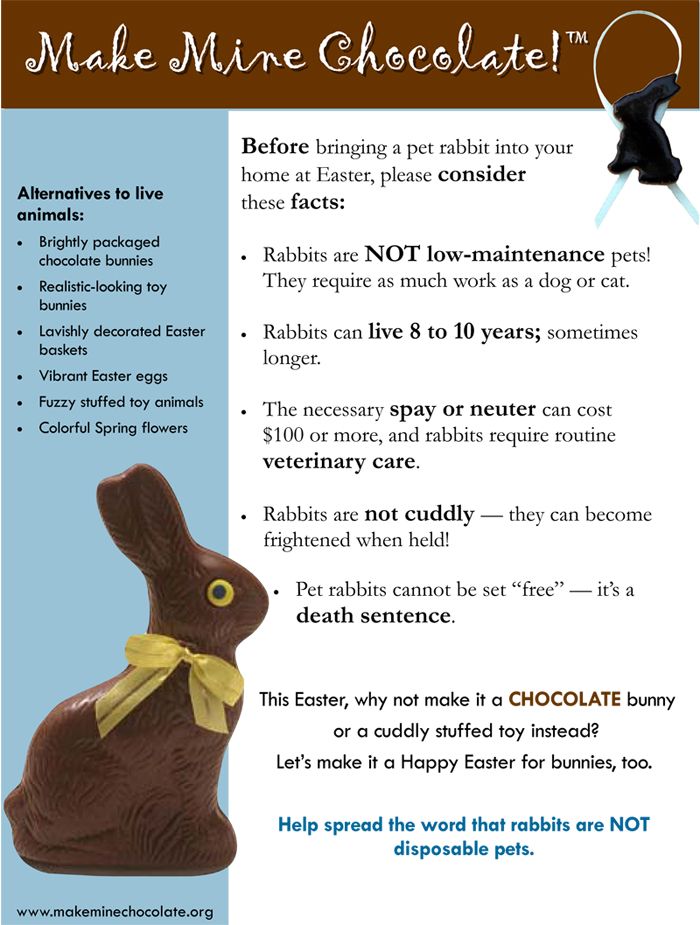 A behavioral attitude, such as mounting, does not necessarily help identify sex in a rabbit. It is usually easy to identify the male once we know what to look for: large testicles, recognized as pink, hairless “sacks.” This can be difficult in young Rabbits, before the testicles drop. The scent glands in a young female can be mistaken for emerging testicles. Males can also pull their testicles in to their abdomen. If you have any doubt, a trip to the Vet may be warranted.
A behavioral attitude, such as mounting, does not necessarily help identify sex in a rabbit. It is usually easy to identify the male once we know what to look for: large testicles, recognized as pink, hairless “sacks.” This can be difficult in young Rabbits, before the testicles drop. The scent glands in a young female can be mistaken for emerging testicles. Males can also pull their testicles in to their abdomen. If you have any doubt, a trip to the Vet may be warranted.
Is There A Problem?
Often times people are concerned that the mother rabbit “is not feeding the babies,” sometimes because she is never seen with them. This is normal behavior for a domestic (or wild) rabbit and that mother rabbits do not “lay” with their offspring in the same manner as dogs and cats.
Domestic rabbits retain some of the genetic imprints of their wild European ancestors, who are animals preyed upon by others in nature. Mother rabbits instinctually sense that staying with their offspring would call a predator’s attention to the nest. Adult rabbits have a scent, while babies do not yest have a strong scent.
Adult rabbits have a scent, while babies do not yest have a strong scent.
Most mother rabbits will not hop into the nest (or box) to check on their infants during the day, although she is usually watching from a safe distance. This is normal behavior.
Rabbits feed their offspring only once or twice per day and will only do so when they feel safe, usually just before dawn and/or just after dusk. If humans and children are continually gathered around the cage, the mother may become too stressed to nurse the infants.
There is a way to determine that the mother is indeed feeding the offspring. Did the mother rabbit pull fur? Did she shred papers, or gather hay or rip up carpeting (if housed indoors) in an attempt to “make a nest?” Mother rabbits usually make a nest any time between a few days prior to the birth up to the day of birth itself. She may also do so without an actual pregnancy.
A mature female will often pull fur to make a nest, with or without a male present and regardless of whether actual mating has occurred. This hormonal behavior is known as a “false pregnancy.”
This hormonal behavior is known as a “false pregnancy.”
If the mother has pulled fur in an attempt to make a nest, she will probably be all right if her nest is appropriate. It is safe to examine the babies and move them, with the mother, to a more proper place, if necessary.
Creating A Nest
If the babies are scattered, cold and do not have plump tummies, the mother needs help making a proper nest box, and the babies need to be warmed up before anything else is attempted. No baby mammals can successful digest foods if their body temperature is below normal. This is extremely important to understand.
In this case, warm the babies as follows: Place a hot water bottle, filled with warm water (not hot,) into a small box of any kind. Line it with clean, terry cloth towels and place the bottle UNDER the towels. A small plastic container or a leak-proof plastic bag can be used if necessary. Make a small space within the nest and put the babies within the temporary warming nest.
Be sure the babies are not in direct contact with the warm water (it may become too hot for them.) Be sure that the towels do not have holes in them and are not frayed, because the fine threads could cut their delicate skin and holes could strangle them should they squirm through one.
In the meantime, prepare a proper box and nest for the mother, so she will feel secure when the babies are returned to her. Get a cardboard box, or make a wooden one, which is just slightly larger than the mother rabbit. It should not be too big, or the babies may scatter again and miss that important feeding.
A doorway should be cut in the center of one side, which is just large enough for the mother to fit through. The doorway should have a lip of about one-inch above the floor to help keep the babies in the box (until they are old enough to venture out on their own.)
Place a large handful of straw, grass or hay in the box and place it in a corner of the rabbit cage. Be sure it is not in the corner that she uses as a bathroom! Make sure that grass clippings do not contain any pesticides or fertilizers. Do not use fabric scraps, burlap, gauze or anything else with fine threads or holes in it. The straw/hay should be removed and replaced every three or four days as it may become soaked in urine. This is done by taking the babies out of the box, removing and later replacing most of the clean fur, and changing the rest of the bedding and lining the box with clean bedding.
Do not use fabric scraps, burlap, gauze or anything else with fine threads or holes in it. The straw/hay should be removed and replaced every three or four days as it may become soaked in urine. This is done by taking the babies out of the box, removing and later replacing most of the clean fur, and changing the rest of the bedding and lining the box with clean bedding.
The babies can be placed into the new nest as soon as their body temperature feels warm to the touch. (ONLY warm the babies if they have been scattered about on the cage floor. If they were huddled together in a good nest site, leave them alone, except to check whether they have been fed.).
Place the mother and the babies in a small, warm, quiet room. Give the mother a litterbox, in the opposite corner of the nest, if she’s placed indoors. If she is not used to being in the house, this may stress her more than being left in her outdoor cage. The only thing to do in that case is add a proper nest area.
Are They Getting Fed?
A well-fed baby will have a very distended tummy, looking like the “Pillsbury Dough Boy. ” If the babies’ tummies are full, the mother is feeding them and the caretaker can rest assured. The babies can be examined every day if that will make the caretaker feel more assured.
” If the babies’ tummies are full, the mother is feeding them and the caretaker can rest assured. The babies can be examined every day if that will make the caretaker feel more assured.
If the babies have not been fed, they will have sunken tummies, their skin will be wrinkled from dehydration and they will be weak (their response to being handled will be weak or non-existent, although they will hopefully be breathing.) Scattered babies are more likely not to have been fed, so make sure that they are warm first.
If the babies are weak or dehydrated, veterinary intervention is advised. Placing a drop of honey or fruit jam into their mouths sometimes helps elevate their blood sugar level until veterinary help and/or mother’s milk is available.
At this point, examine the mother for signs of lactation. By gently holding the mother upright, or gently turning her upside down in a lap, the nipples can be examined. They should feel slightly swollen and it is likely that the mother pulled a great deal of fur from her chest and stomach to not only make her nest, but also to better expose the teats for the babies.
Slight pressure in a milking motion should release either small amount of milk or clear fluid. If the mother is lactating, return her to the babies and allow her to calm down and become familiar with her new nest. Examine the babies the next day to make sure that they are being fed.
If the mother is definitely not lactating or has not attempted to pull fur or make a nest, etc., take the mother to a qualified rabbit-experienced veterinarian immediately. The veterinarian will probably give the mother a small dose of oxytocin, a drug that will stimulate the milk glands. She should nurse within the next 24 hours.
If you feel it is necessary to examine the babies every day to verify that they have been fed, pet the mother rabbit first, to help cover human scents, and avoid wearing heavy perfumes when handling the babies. It is best to handle the babies as little as possible until they are old enough to leave the nest box on their own.
If your concerns begin on the day of the birth, wait a day before attempting to do anything. Some mother rabbits do not feed their babies until the evening of the first day or early on the second day.
Some mother rabbits do not feed their babies until the evening of the first day or early on the second day.
If it has been close to two days and you are positive that the babies have not been fed, a veterinarian must be seen immediately. Oxytocin will not produce results if you wait more than forty-eight hours after the birth.
While waiting for a veterinary appointment, try allowing the babies to nurse, as suckling sometimes stimulates the milk glands. If that happens, monitoring the babies’ growth is the only thing that needs to be done. Mother rabbits stand upright while nursing and the babies lie upside down beneath her. Hold the rabbits in this natural position.
Are The Babies in Danger?
If you think that the mother is injuring the babies while kindling (giving birth,) while feeding, or has “cannibalized” any of the babies (eaten them,) several issues should be explored. Sometimes a mother rabbit will accidentally injure the kits because her nails have never been clipped, the nest box is not proper, or she is stressed and skittish by too much activity around her. It is possible, if she is housed outdoors, that neighborhood predators, such as feral cats, raccoons or fox, are causing her anxiety at night. Some rabbits are highly skittish (“fractious”) by nature.
It is possible, if she is housed outdoors, that neighborhood predators, such as feral cats, raccoons or fox, are causing her anxiety at night. Some rabbits are highly skittish (“fractious”) by nature.
Very young mothers, especially those under six months of age, may not “understand” what has happened to them and veterinary intervention is imperative. Nervous and young mothers sometimes abandon their nestlings for unknown reasons, which may include having produced unhealthy kits. Sometimes the nutritional status of the mother is highly inadequate.
If the mother seems to be cannibalizing the nestlings, nutritional deficiencies are but one of the possible scenarios. It is normal for these vegetarian animals to eat the afterbirth, as it is for most other mammals. It prevents predators from discovering the nest and provides the mother which some much-needed nutrients. Sometimes people confuse this behavior (if it is witnessed) with cannibalism.
Sadly, if the father of the babies is much larger than the female, she could be inadvertently injuring the kits, which are too large for her birth canal, while attempting to free them. Seek immediate veterinary intervention should this be happening. The mother’s life is in danger, as well as the lives of the babies.
Seek immediate veterinary intervention should this be happening. The mother’s life is in danger, as well as the lives of the babies.
If the mother rabbit has died, cannot or is not feeding the babies, you can attempt to hand feeding them. Bottle-feeding infant rabbits usually culminates in the babies’ death within a few days to weeks. Hand feeding is terribly unsuccessful because there is no milk replacement formula that is 100% adapted for infant rabbits. This is also true for native species, such as cottontails. The physiological reasons are complex, and you should have the following information concerning what you will be facing when trying to hand-raise infant bunnies.
Feeding Orphaned Baby Rabbits
The most likely potential disease to cause infant/weanling mortality is mucoid enteritis. Although it does occur occasionally in weanlings who have been fed by their mothers, it is seen much more often in hand-fed babies and those who are removed from their mothers before eight weeks of age. It manifests as severe diarrhea, anorectic behavior (refusal to eat) and may contain blood or mucous. It also causes bloating and gas.
It manifests as severe diarrhea, anorectic behavior (refusal to eat) and may contain blood or mucous. It also causes bloating and gas.
Mucoid enteritis is caused by a pathogenic bacterial overgrowth, usually of Clostridium spiroforme, in the hindgut (cecum) of the baby, as the normal microflora are attempting to establish. These normal microflora help the baby achieve adult digestive capabilities.
Adult rabbit stomach pH is 1-2, but a neonates’ stomach pH is much higher; the stomach and gastro-intestinal tract of neonates is also sterile (containing no living microorganisms.) As babies wean off of milk onto adult solid foods, the gut pH gradually changes by getting a lot of help from the mother’s changing milk constituents.
By ten days of age, the babies eyes will have opened, and they will begin eating their mother’s cecotropes, (also called “night feces” or “cecal droppings”). Cecotropes help provide the babies with essential nutrients and later, inoculate the hindgut with the essential flora that is needed to metabolize a diet that is changing from milk to solid foods.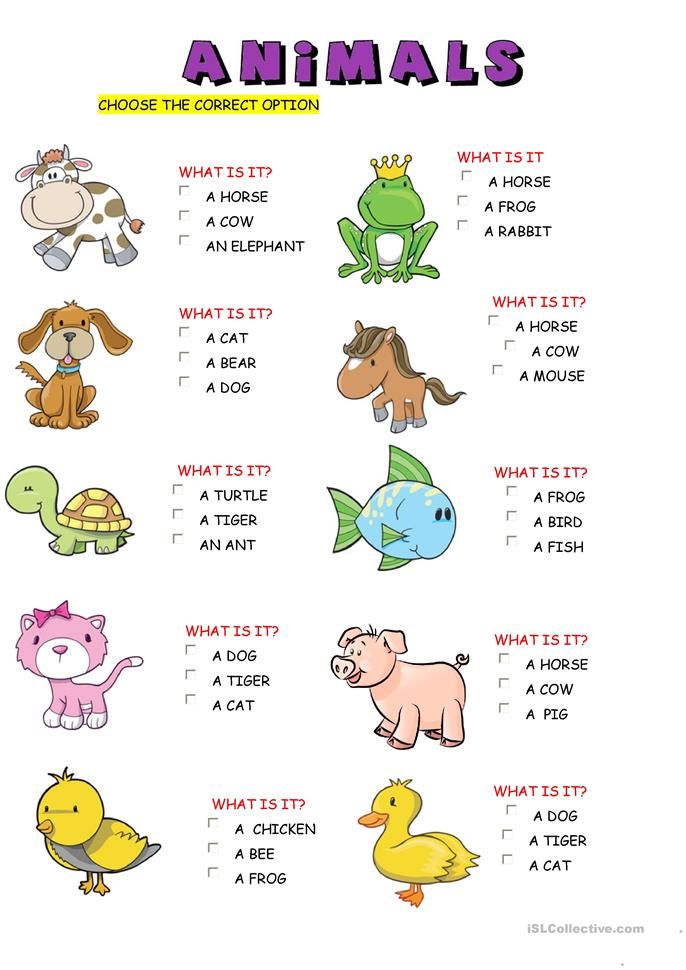
Cecotropes are clustered, soft gel-like “bunches” of fecal matter, which are covered with a light mucous film and resemble a mulberry in shape and size. They are manufactured in the adult cecum through “hindgut fermentation,” and contain high concentrations of proteins, B and K vitamins, fiber, ash (nitrogen-free extract) and unidentified “energy” elements, as well as the hindgut microbes. Cecotropes are an important part of a healthy rabbit diet and are usually eaten directly from the anus as they are produced.
Remember that our domestic rabbits were developed from the wild European rabbit, whose native diet was lacking in many nutrients. Cecotropes, a self-manufactured source of proteins and other nutrients, provide rabbits with the necessary nourishment to sustain their lives.
Infant rabbits also have an antimicrobial fatty acid in the stomach that differs from digestive gastric acids. It is produced only from an enzymatic reaction with a substance found only in the mother’s milk. This action controls the gastro-intestinal microbial contents in the babies’ tract.
This action controls the gastro-intestinal microbial contents in the babies’ tract.
As the babies begin to wean, at four to six weeks of age, they lose the guardianship of the mother’s milk/stomach enzymatic reaction and gradually develop the adult pH of 1-2. Often babies will seem to do fine until this critical stage is reached. It is at this point that both the mother’s milk and her cecotropes begin introducing the necessary adult flora (to digest solid foods) into the babies’ gastro-intestinal tract.
Note that a diet low in fiber and a high level of grain have been documented to cause enteric disturbances in adult rabbits as well as weanlings. Toxic microbes proliferate in the cecum due to the high-carbohydrate levels, and the lack of dietary fiber slows down the gut motility, providing a perfect environment for the toxins to grow.
In hand-raised babies, it is essential to provide adult cecotropes to the babies after their eyes are open. Usually, the babies will eat the cecotropes immediately, because it the natural thing for them to do. However, if the babies do not eat the cecotropes on their own, add two to three of the individual pellets in the cluster to the formula at one feeding per day for three to four days. As the babies begin to explore adult foods, it is impotant to monitor their fecal output. At the first sign of “mushy” stool, re-introduce cecotropes to them, in formula if necessary.
However, if the babies do not eat the cecotropes on their own, add two to three of the individual pellets in the cluster to the formula at one feeding per day for three to four days. As the babies begin to explore adult foods, it is impotant to monitor their fecal output. At the first sign of “mushy” stool, re-introduce cecotropes to them, in formula if necessary.
Depending on the infant’s dietary status and stress factors, that may include the babies’ immune system (which varies greatly from genetic factors,) the infants’ sterile gut may be unable to colonize with normal adult microflora. The gut would then become overloaded with abnormal bacteria, which leads to bloat, electrolyte loss and death from mucoid enteritis. The most common pathogens found in weanling rabbits that died of enteric disturbances are E. coli and Clostridium spp., and protozoa such as Coccidia spp.
Intravenous or intra-osseous fluid therapy supplied by a veterinarian experienced in rabbit medicine may help in some cases, as the ensuing diarrhea severely affects hydration and electrolyte levels.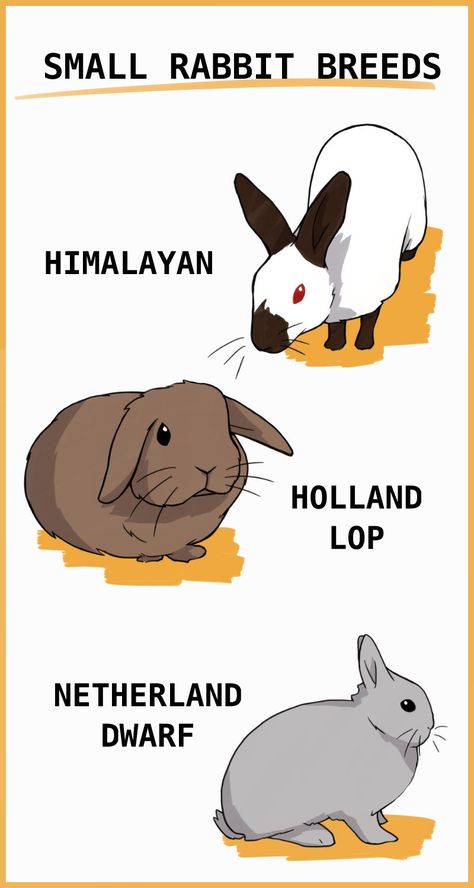 Oral hydration would be of little help in this instance, and the use of antibacterial agents in infants is not advised. Administering antimicrobials in an attempt to control abnormal gut flora may further disturb development of normal gut microflora. Products such as Baytril (enrofloxacins) are extremely detrimental for use in baby mammals.
Oral hydration would be of little help in this instance, and the use of antibacterial agents in infants is not advised. Administering antimicrobials in an attempt to control abnormal gut flora may further disturb development of normal gut microflora. Products such as Baytril (enrofloxacins) are extremely detrimental for use in baby mammals.
More On Feeding Orphaned Baby Rabbits
Some practitioners and rehabilitators use “probiotics,” theoretically establishing the correct pH environment in the cecum to allow the “good bacteria” to proliferate, and thereby crowding out the “bad bacteria.” The addition of Lactobacillus acidophilus cultures to baby formula may be helpful by acidifying the gut, although no scientific documentation has proven the theory. (There have been several studies done, with inconclusive results.)
While acidophilus is not a normal flora in the rabbit gut, it may help produce an environment which helps normal flora establish and grow. Other studies claim that none of the living cultures in acidophilus can survive the high pH in the stomach and therefore it is a wasted effort. However, this may be a clue as to why conflicting evidence is found: as the weanlings’ gut pH is undergoing drastic changes very quickly, the actual age of the baby may have a profound effect on whether or not the addition of acidophilus or other probiotics is effective. The addition of acidophilus has never been shown to be detrimental, at any rate.
However, this may be a clue as to why conflicting evidence is found: as the weanlings’ gut pH is undergoing drastic changes very quickly, the actual age of the baby may have a profound effect on whether or not the addition of acidophilus or other probiotics is effective. The addition of acidophilus has never been shown to be detrimental, at any rate.
Yogurt with live cultures has been used as a source of acidophilus and has been used in baby formulas. Adult rabbits do not produce lactase, the enzyme which digests lactose sugars (milk) and I advise against using yogurt as a source of acidophilus, if one chooses to supply it. Because a weanling rabbit’s gut is changing so drastically, it would be realistically impossible to determine at what exact moment a weanling rabbit develops intolerance for dairy products. Freeze-dried, organic acidophilus cultures are available at better health food stores and would probably be a better, safer choice than yogurt, in my opinion.
The probiotics “Bene-bac” (providing “beneficial bacteria” for avian species) and “Probiocin” (used most often for canine and feline species) have also been used to provide beneficial bacteria in rabbits and rabbit babies. The banana flavor of Bene-bac is popular with rabbits, which makes it easy to administer. No documentation has proven either product to be detrimental, although likewise, none exists supporting its use (except manufacturer’s claims.)
The banana flavor of Bene-bac is popular with rabbits, which makes it easy to administer. No documentation has proven either product to be detrimental, although likewise, none exists supporting its use (except manufacturer’s claims.)
Fox Valley Animal Nutrition, Inc. also has a product called “Formula L A 200,” which is a viable lactobacillus acidophilus that acts in the same way as Bene-bac. The telephone number for Fox Valley is 1-800-679-4666
Unfortunately, because so little actual documentation exists regarding the use of probiotics, there does not exist a formulary regarding appropriate dosages, either. Too much could be as detrimental as the problem itself.
Probiotics also usually come in proportions of millions or even billions per milligram, which makes breaking down an appropriate dosage for a baby bunny difficult. “Bene-bac” in housed in a syringe calculated for the smaller weights of domestic-exotic parrots and other caged birds. This would be reason alone to argue that the use of avian “Bene-bac” is a more reliable dosage indicator for a weanling that weighs less than about half a kilogram.
There is another more recent product for veterinarians and rehabilitators on the market from Pet-Ag, Inc., Zoological Nutritional Components, called Milk Matrix. Manufactured for various wildlife species, there is a specific formula for native Eastern Cottontails (Sylvilagus Floridanus.) This may be the best substitute for a domestic rabbit’s milk available. I have not yet used it, but other rehabilitators have claimed success with it. The telephone number to order is 1-800-323-6878. If you have technical questions about the product, the number is 1-800-323-0877.
No substitute milk formula supplies immunity from disease (although the normal maternal antibodies are scarce) nor are most rich enough to supply the energy needs of the rapidly developing babies and without overfeeding them (leading to bloat.) For these reasons and the others stated, the prognosis is not good for the babies.
Infants lose the suckling instinct quickly, so if hand feeding is to be attempted, it must be started within 48 hours. Kitten nursers are much too large for the mouth of a baby rabbit. Toy doll bottles are sometimes small enough. If the baby has lost the suckling instinct, a tuberculin syringe (with needle removed, of course) can be used to carefully administer formula. Allow the babies to swallow naturally, or it may aspirate (breathe fluids into its lungs.) Be sure that the formula is warm, the babies are warm and that the bottle or syringe is sterile. Serious pathogens may be present in both the nursers and the formula, if not prepared correctly.
Kitten nursers are much too large for the mouth of a baby rabbit. Toy doll bottles are sometimes small enough. If the baby has lost the suckling instinct, a tuberculin syringe (with needle removed, of course) can be used to carefully administer formula. Allow the babies to swallow naturally, or it may aspirate (breathe fluids into its lungs.) Be sure that the formula is warm, the babies are warm and that the bottle or syringe is sterile. Serious pathogens may be present in both the nursers and the formula, if not prepared correctly.
As Baby Rabbits Come Of Age
If the babies survive BIG IF, they may suffer from chronic gastro-intestinal problems throughout their lives, including stasis episodes and bloating. Both problems are treatable for quite a long time, but expensive and emotionally draining to do.
If the mother rabbit has died, call reputable commercial breeders to find a foster mother. Rabbits will foster another’s baby if they are the same of the same size and age. The breeder may charge for this service, if they are willing to do it. The breeder may also ask to keep one or more of the babies as “stock.”
The breeder may charge for this service, if they are willing to do it. The breeder may also ask to keep one or more of the babies as “stock.”
As soon as the babies are weaned, at eight weeks, the mother rabbit should be spayed. She can then be placed back into the companionship of the now (hopefully) neutered male.
In any case of domestic rabbit babies, do not remove the babies until they are a full eight weeks of age. Separate the male babies from the females at this time. Males can become sexually mature as early as ten weeks!
Spay and neuter the offspring. Males should be neutered as soon as the testicles descend and females after four months but before a year of age. This is especially important in “open warrens,” wherein rabbits run free; as one pair of mature rabbits, with their unaltered offspring, can produce more than 200 babies within a year. That is a lot of responsibility, which could be curtailed by simply altering the existing bunnies.
Altered babies will make much more adoptable bunnies, be better human companions, will live longer, and will never be a contributor to the pet overpopulation problem. They will be less likely to be dumped at a shelter, most of which would be unable to accept such large numbers and would probably have to euthanize most… if not all of them.
They will be less likely to be dumped at a shelter, most of which would be unable to accept such large numbers and would probably have to euthanize most… if not all of them.
Rabbits that are put up for adoption, especially babies, are often “adopted” to feed predator pets, such as pythons. “Free to a good home” is not a good advertisement for a safe new place for them. People take “free” bunnies not only to feed predators, but less ethical persons take them to train their dogs to kill. Some use them for “religious” practices that use animal sacrifices, such as Santeria rites. Some take a “free” rabbit I order to eat it and others will kill it for their fur (pelt.)
If one raises baby Rabbits, it is ones responsibility to find a “good” home . It is ones ethical and moral duty to adequately interview potential adopters and find the best home for the babies.
The best places to post advertisements are at veterinarians’ offices, organizations that promote Humane Education, “no-kill” shelters and civic organizations that support human services.
Thank you for caring for these special Rabbits. We pray for your success, and hope that your experience is as rewarding as Mary’s was in her care for Millie’s Children.
This article is reprinted by permission of Kindplanet.org
Below content merged from /care/newborn.html
Newborn Baby Bunny Facts
House Rabbit Society volunteers get countless calls from well-meaning people who find “orphans” or “abandoned baby rabbits” behind the shed or in a nearby field. Unknowingly they break up families and separate mother rabbits from their babies in an effort to “save” them. Also, we often hear from concerned owners, who don’t know that rabbits only nurse once a day, that their pet rabbit is not feeding her newborn litter. We usually reply with the question, “How do you know? Do you stay up all night and watch?”
Since House Rabbit Society rescuers have taken in many pregnant rabbits, who live inside our homes with us (instead of outdoors in hutches), we are able to observe, get close to, and participate in the activities of raising a litter.
If you are ever confronted with questions on baby bunny care-domestic, not wild rabbits-here are a few guidelines.
- Although rabbits build nests, they are not chickens and, after initial preparation, will not sit on their nests. They also do not stay on or by the nests after the babies are born. This would attract the attention of predators. The babies burrow to the bottom of the nest where they remain hidden until Mamma Rabbit wakes them up at mealtime.
- Only rarely does a mother rabbit nurse her young right after giving birth. Most often the first nursing will occur the night after the kindling. The rabbit’s rich milk sustains the babies for 24 hours at a time. The preferred mealtime is between mid night and 5:00 a.m.
- A mother rabbit does not lie down in the nest, as a cat would do, but stands over the babies to nurse them. She does, however, clean them and lick their bellies and bottoms to stimulate elimination in much the same way as a cat.
- If you want definite proof that the babies are being cared for, check them early each morning.
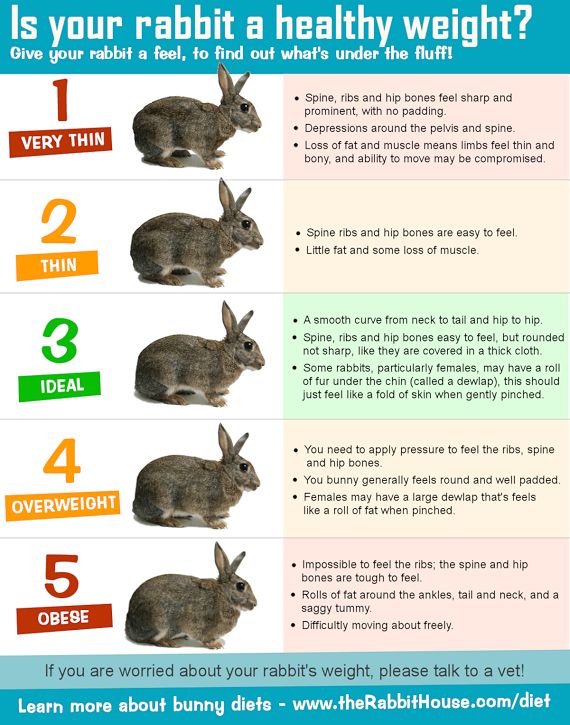 They should be warm and round-bellied. The best way to know for sure is to weigh them on a small postage scale or kitchen scale. Write down a description and the weight. If they’re gaining weight (1/4 oz. or so), they’re being fed.
They should be warm and round-bellied. The best way to know for sure is to weigh them on a small postage scale or kitchen scale. Write down a description and the weight. If they’re gaining weight (1/4 oz. or so), they’re being fed. - You can handle the babies even if the mother doesn’t know you. Domestic rabbits are not that concerned over human smells.
- Rabbits are not prone to cannibalism, as many people think. Cannibalism is an occasional result of a stillborn litter, and this is nature’s way of cleaning up the “mistake.” The activity and noisy squeaking of healthy babies trigger the “maternal instincts.”Only rarely does a mother rabbit truly abandon or ignore her babies. This may occur when a very Immature rabbit gives birth, In which case, she usually does not build a nest or make any preparations. Her milk production Is also delayed. Sometimes the babies can be hand fed for short time until the mother rabbit can take over the job. Again, their daily weight gain is the test of adequate nourishment.
 (If you must hand feed, refer to page 81 of the House Rabbit Handbook.
(If you must hand feed, refer to page 81 of the House Rabbit Handbook. - Generally a male rabbit is tolerant of young rabbits and, if neutered, can remain with his new family. The father will begin to nip and play roughly with the sons as they begin to reach puberty and start acting feisty. Then It’s time for separation. A male rabbit must be neutered before being put back with the mother because she can conceive again immediately after giving birth. They should be kept separate for a month after neutering.
What to do if the rabbit does not feed the rabbits? What to feed
- Are you here:
- Own farm
- Farmer questions
- rabbits
Why doesn't the rabbit feed the baby rabbits? The young female had her first birth. I have been watching for a day, but have not yet seen her feed them. Sorry little ones. What to do?
I have been watching for a day, but have not yet seen her feed them. Sorry little ones. What to do?
A gap of 24 hours is not yet a reason for panic, many young mothers begin to feed their offspring 30 hours after giving birth. Now, if after that interval she still has not fed the cubs, it is time to get worried.
First, make sure that the Rabbit has eaten well and has milk come in? The latter can be determined by feeling the mammary glands. Normally, milk comes in small amounts and increases in quantity as the baby feeds. To increase its production, you need to apply babies more often. If there is still no milk, then try giving the young mother dill, parsley, weakly brewed tea with milk. And you need to start with a small dose, gradually increasing. Tea with milk should only be fresh. And, of course, there should be fresh water in the drinking bowl. Try also adding specialized compound feed.
Main reasons for refusal to feed
If there is milk, but she does not want to feed, then the following reasons are possible:
- The most common of them is hunting.
 If a male lives next to the nest of a young mother, then the desire may wake up. This can make her forget about her direct duties. Move the male away, if it doesn’t help, then let the rabbit in mating. Of course, then after 30 days you will have to stop feeding due to new births, but this is still better than leaving babies without milk at all.
If a male lives next to the nest of a young mother, then the desire may wake up. This can make her forget about her direct duties. Move the male away, if it doesn’t help, then let the rabbit in mating. Of course, then after 30 days you will have to stop feeding due to new births, but this is still better than leaving babies without milk at all. - It is also possible that the young rabbit has hardened nipples and she refuses to let her offspring come to her because of pain. There are two exits. If they are not very hardened, you need to massage them and squeeze out some milk. If the problem is more serious, then lubricate the nipples with vegetable oil or special ointments and also massage. At this time, it is necessary to find a temporary nurse for the kids.
- Strong odors such as gasoline, perfume, alcohol, mice, and other animals can be another cause. Remove any strong odors.
- Well, the last most hopeless cause - mastitis (infection of the mammary glands) or other diseases.
 In this case, the best way out is to find another lactating rabbit.
In this case, the best way out is to find another lactating rabbit.
Waking up the female's natural feeding instinct
If a young female does not feed her cubs, then after 3-4 days the milk will disappear as unnecessary. But while it is still there, you can try to force-feed the cubs with your mother.
There is nothing better than mother's milk, so you need to try to establish a natural feeding process. Be sure to wash your hands with odorless soap before starting. Then take the rabbit and hold over the baby (start with one). Be sure to fix the hind legs so that it does not inadvertently harm the baby.
The calf must be between the paws and be able to reach the nipples. The process of feeding the baby rabbit will take about 15 minutes, do not worry if he moves from nipple to nipple in the process - this is normal. By the swollen tummy, you will understand that the procedure was successful. Start with the smallest and weakest eared, and then bring the strong and large ones.
Of course, this procedure is not very pleasant for the female, she will try to run away, but if you do it a couple of times, then you will wake up the natural instinct in the negligent mother and then she will cope on her own. B With this forced feeding method, it is reasonable to stop at 2 approaches a day, for example at 9 am and 9 pm.
Putting the babies to the foster mother
If the mother is sick, it is better to try to find a nurse for the hungry rabbits. It must be a female, with rabbits of a similar age. It is better that the difference between the litters does not exceed 3 days, because the older ones will eat everything and not let the little ones eat.
If you have a candidate for the role of a wet nurse, prepare the young rabbits for relocation. Let the female out for a walk, and put new cubs in the nest, after rubbing them with sawdust from the rabbit's toilet and covering the new rabbit with fluff. Wait an hour before returning the female, so that the new ones have time to smell her scent. Cubs usually feed on milk for up to 3 months, so do not rush to wean them from a nursing female early, this is fraught with immunity problems.
Cubs usually feed on milk for up to 3 months, so do not rush to wean them from a nursing female early, this is fraught with immunity problems.
How and what to feed rabbits without a rabbit?
There is nothing better for baby rabbits than natural feeding, but still there are times when it is not possible. Mom didn’t have milk or she is sick, and she can’t find a nurse - these are direct indications for an emergency start of attempts to feed babies without a rabbit. The question arises - what?
Small rabbits can be fed, for example, with artificial puppy formula. In composition, it is closest to rabbit milk. In second place in the list of close-compound mixtures is powdered milk for kittens. But such mixtures can be found without problems only in large cities.
What should residents of small towns do? We offer you an option with goat's milk. Take a small amount of room temperature goat's milk, a clean dropper and a saucer. Pour the milk into a saucer, take the rabbits one by one in the palm of your hand and pipette one drop at a time until the tummy looks full. Be careful, keep the cubs upright so that they do not choke on milk.
Be careful, keep the cubs upright so that they do not choke on milk.
In terms of volume, feeding will be about 2.5 ml per one. So at the age of 1-2 weeks they need 5-7 ml, at 2-3 weeks - up to 13 ml, then - up to 15 ml per day. Feed your rabbits only milk until they are 2-3 weeks old, then slowly introduce other foods. But don't stop formula feeding. In nature, the female feeds the cubs 2-5 times a day, so divide the indicated amount of food into several feedings.
Also, don't forget that in addition to feeding, baby rabbits need their mother to start the process of urination and bowel movements. Therefore, in the situation of the absence of the female, before feeding, you need to stroke the cubs several times with light movements in the direction of the abdomen downwards with clean hands or a damp cloth before feeding, so that they urinate. At two weeks, the rabbits themselves begin to go to the toilet.
More to read
Why can a rabbit's hair fall out? What to do?
Rabbits sneeze: why and what measures to take?
How many days do rabbits carry baby rabbits?
Rabbits gnaw at the cage: why and what to do?
Latest comments
birth date calculator
what to do, how to awaken the instinct
Rabbits are prolific animals: the number of cubs born in one litter can approach 20. Sometimes the uterus refuses to feed the cubs, therefore, in order to save the offspring, you need to quickly find out and eliminate the cause of the refusal, case, transfer rabbits to artificial feeding. If the rabbit does not feed the rabbits, what should I do? The answer to this question is presented in our publication.
The female rabbit does not feed her offspring
The content of the article
- 1 How to determine that the rabbits are starving
- 2 The reasons for the underfeeding of the young rabbits
- 2.
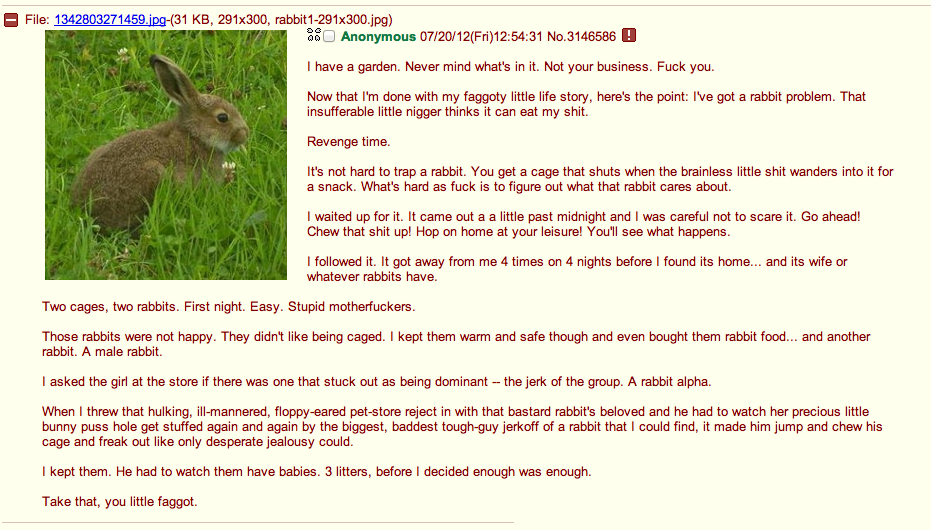 1 Numerous offspring
1 Numerous offspring - 2.2 The lack of milk in the uterus 2.2.1 How to stimulate lactation
- 2.
- 2.3 Prices for mixed feed for rabbits
- 3.1 Mastitis and other diseases
- 3.1.1 How to act if mastitis is detected
- 3.2 Hardening and sore teats
- 3.2.1 How to relieve discomfort while feeding
- 3.3 Wild hunting
- 3.4 Other reasons
- 3.5 Prices for rabbit cages
- 4 How to awaken the maternal instinct
- 4.1 How to force-feed
- 5 How to put baby rabbits to the wet nurse
- 5.1 How to transfer to another uterus
- 6 Artificial feeding of rabbits
- 6.1 Alternatives to mother's milk
- 6.2 Equipment for feeding young rabbits
- 6.3 Feeding
- 60003 .5 Some features of the physiology of rabbits
- 6.
 6 Requirements for the maintenance of newborns
6 Requirements for the maintenance of newborns - 6.7 Algorithm of actions when feeding newborn rabbits
- 6.8 Video - How to feed rabbits without a rabbit
3 6.4 Amounts of food for different ages
How to tell if a baby is starving
The first feeding of newborns takes place within the first 24-30 hours after birth. Then the female feeds the babies up to 5 times a day. It is quite difficult to observe the very moment of feeding, it is easier to evaluate the milkiness of the uterus by how the rabbits look outwardly. From a calm stay in the nest, a good looking skin with smooth skin and a shiny coat, it can be concluded that the female has sufficient lactation.
In milk mothers, the cubs lie quietly in the nest
Starving cubs are given out by an angular build, tousled coat and wrinkled skin. The rabbits are restless, squeak, crawl out of the nest.
Causes of underfeeding of young rabbits
Underfeeding may be due to the following reasons:

Let's consider each reason in more detail.
Numerous offspring
The number of young rabbits in a litter varies quite strongly, usually within 4-9, especially prolific females can give birth to 16 cubs at the same time. If the number of cubs exceeds the number of nipples in the mother, some of the rabbits are transferred to another nest.
Sometimes too many babies are born
This method is known as leveling; it is widely used both in individual farms and on large farms. Experienced rabbit breeders happen to have several females on the same day so that there are several queens on the farm that can be used as nurses. If there are no candidates for a nurse, part of the litter will have to be fed artificially.
Lack of milk in the uterus
If there are no more than 8 cubs and there is not enough milk in the uterus for all, then the mammary glands of the female must be examined and acted depending on the results of the examination. If there is no milk or it is not enough, you should pay attention to the quality of feeding before and after birth. Perhaps the female is malnourished, and feeding 6-8 cubs is a load that is almost unbearable for the body.
If there is no milk or it is not enough, you should pay attention to the quality of feeding before and after birth. Perhaps the female is malnourished, and feeding 6-8 cubs is a load that is almost unbearable for the body.
It is very difficult for a malnourished female to feed more than six rabbits
How to stimulate lactation
In such cases, the mother rabbit's diet should be adjusted in accordance with the recommended feeding rates. Lactating females are given specialized feed, provide constant access to clean water. Since the industry almost does not produce feed for rabbits, rabbits can be given feed for ungulates, best of all compound feed for calves. When choosing food, you should pay attention to the salt content, it should be no more than 1%. Compound feed with a shell intended for birds is completely unsuitable for rabbits.
Feed prices for rabbits
Feed for rabbits
Recommended feed rates
In summer, lactating queens are given dry grass, in winter - juicy root crops.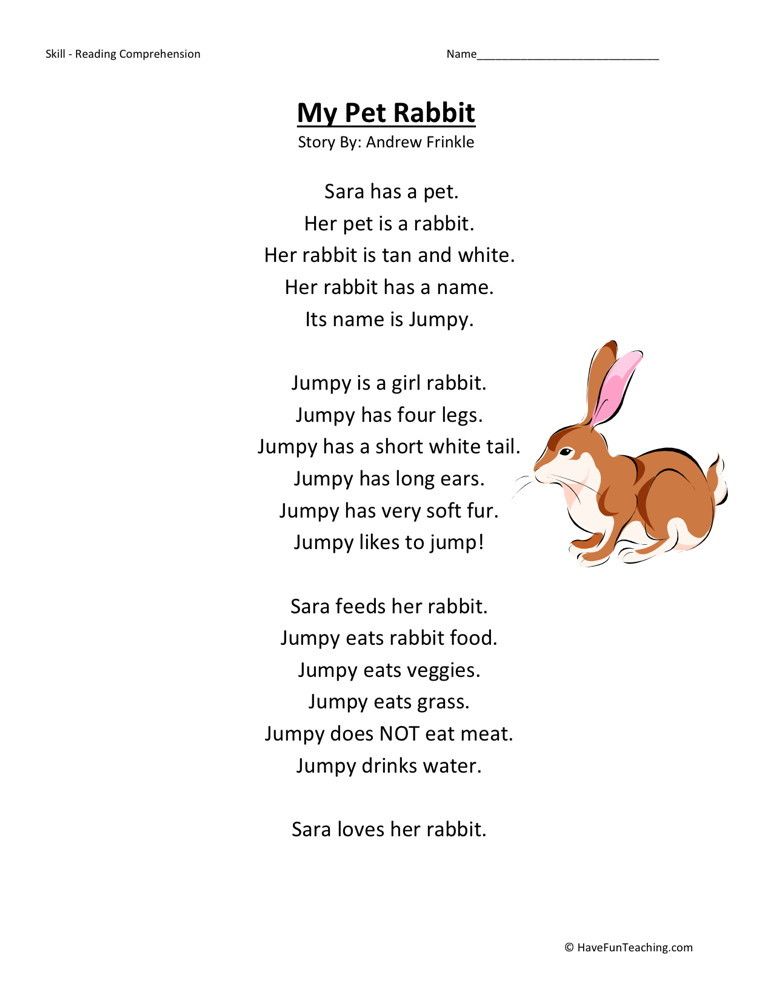 If possible, dried or dried parsley or dill, carrot tops, rhubarb and nettles, known for their milk-producing effect, should be fed. Nettle must be crushed or scalded before being given to rabbits so that it does not burn the mucous membranes.
If possible, dried or dried parsley or dill, carrot tops, rhubarb and nettles, known for their milk-producing effect, should be fed. Nettle must be crushed or scalded before being given to rabbits so that it does not burn the mucous membranes.
Dioecious nettle - one of the best vitamin and lactiferous plants
Stimulate lactation milk and products of its processing: buttermilk, whey, reverse. Rabbits can be given fresh, sour or powdered milk. You can also give weakly brewed tea with milk. This technique is used by breeders of decorative breeds; in large-scale production, it is rarely resorted to. If possible, you can give the uterus walnuts. To increase milk production, half a kernel per day is enough. When using feeds and additives that stimulate lactation, start with small doses and regularly monitor the condition of the pups. In addition, lactation is also stimulated by feeding, until the recovery of the rabbit, it is worth applying the rabbits to the udder more often than usual.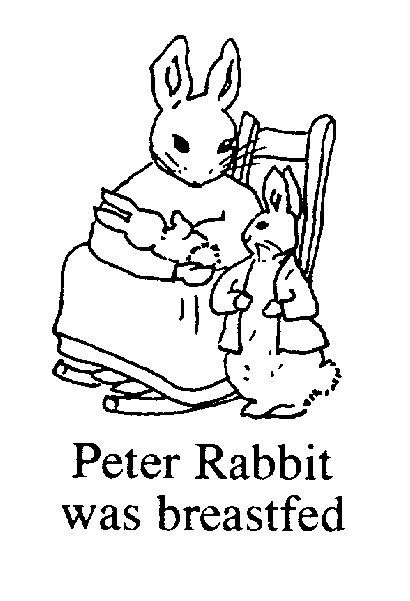
Lactation is stimulated by frequent attachment of baby rabbits
If the condition of the pups approaches critical, and there are no signs of lactation recovery, the pups are artificially fed. It is possible that the entire litter will later have to be distributed between other nests or transferred to artificial feeding.
Reasons why a female refuses to feed baby rabbits
If during the examination it turned out that the mother rabbit has enough milk, then the refusal to feed the cubs is most often associated with violent hunting or manifestations of mastitis.
Mastitis and other diseases
If an adult experimental female flatly refuses to feed offspring, mastitis should be excluded first. Milk begins to be produced shortly before birth, so the mammary glands in high-milk females can become inflamed. Mastitis can develop if the cubs for some reason do not suck out the milk completely (too tight nipples, weakened or small offspring). Sometimes inflammatory processes in the mammary glands are complications of infectious or parasitic diseases that have developed as a result of neglect of the sanitary condition of the rabbitry, underfeeding, hypothermia or stress.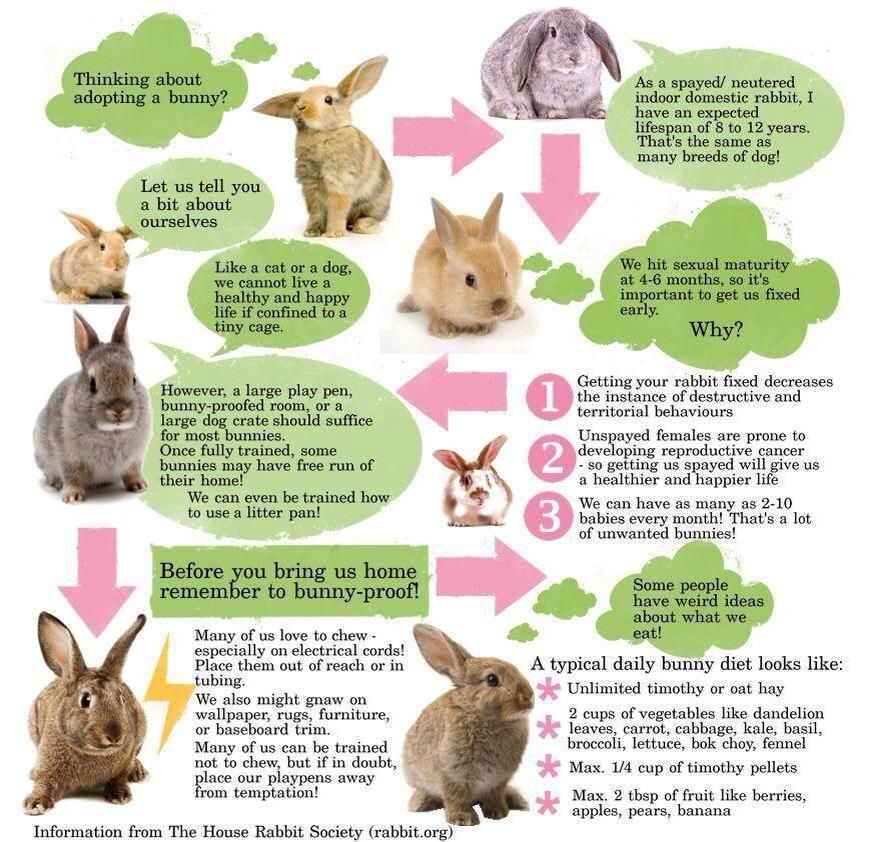
Feeding with mastitis is very painful for the rabbit
An attentive rabbit breeder will suspect something is wrong if the female does not eat well, is restless or vice versa, is inactive, her coat is tousled. Such changes in the behavior and appearance of the animal are often early symptoms of the disease.
The affected glands harden during mastitis, redness, swelling, and local temperature increase are noticeable in the affected area. When probing, the rabbit is worried, can behave aggressively, which indicates the soreness of the gland. Attempts to feed the cubs cause pain to the uterus, she does not let the babies to the nipples, scatters them around the cage. If time does not intervene, the cubs will die from exhaustion and cold, or their mother will trample them.
With a lack of feeding, the rabbit will die of exhaustion
As the inflammation progresses, a purulent process may develop. The skin in the affected area darkens, the pain becomes unbearable for the uterus, it is not able to feed the cubs. If mastitis is suspected, a little milk should be expressed - the presence of flakes, inclusions of pus or blood indicates the presence of a pathology.
If mastitis is suspected, a little milk should be expressed - the presence of flakes, inclusions of pus or blood indicates the presence of a pathology.
How to deal with mastitis
If the inflammation has not gone too far, the problematic glands should be milked. The rabbit is held tightly so that she cannot injure the cubs, the rabbits are applied to all nipples. When feeding, the cubs massage the mammary glands, naturally eliminating congestion.
In the advanced stage of mastitis, the cubs are transferred to another nest or to artificial feeding, the uterus is shown to the veterinarian. Diagnostics of the state of the uterus is carried out regardless of plans for its further use for the timely detection of potentially dangerous enzootic diseases.
Treatment of mastitis in rabbits
Treatment of mastitis is a laborious process, not always effective, therefore, under conditions of industrial breeding, sick and mastitis-prone females are discarded.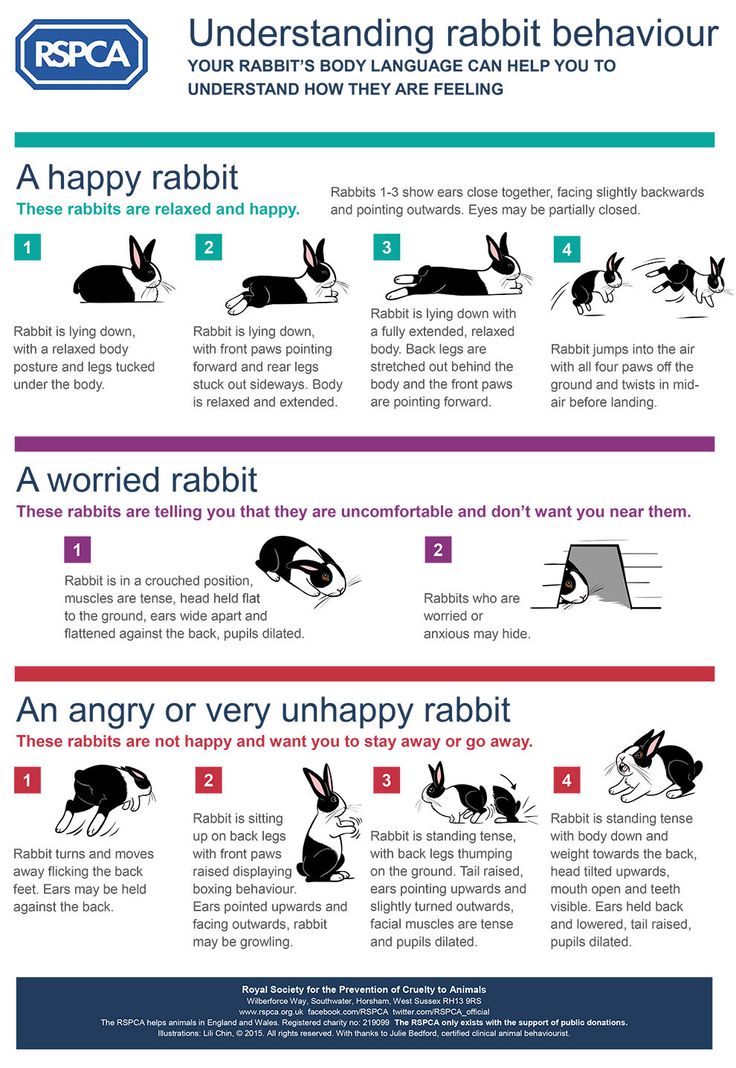
Preventive measures are much more effective. In rooms where pregnant and lactating females are kept, there should be no dampness and drafts, cages and nests should be kept clean. If possible, maintain a comfortable temperature.
When temperatures are too low, even healthy, lactating females sometimes abandon their young, especially if hypothermia is aggravated by underfeeding. The resistance of the body, weakened after birth, is critically reduced, the animals are very vulnerable.
It should be warm in the rabbitry
Nipple roughness and injury
Nipple injury and nipple roughness may be the cause of sore nipples and regular refusal to feed. Nipple injuries may be the result of:
- premature arrival of milk;
- complicated birth;
- cub bites.
Possible cuts or bruises on the feeder, nursery or other uneven surfaces in the cage.
How to eliminate discomfort during feeding
If there is no visible damage and the roughness is not too strong, they act in much the same way as with mastitis. The nipples can be gently massaged, a few drops of milk can be expressed and the pups can be attached to the udder. At this time, the uterus must be held. This technique often saves the situation, and lactation returns to normal.
The nipples can be gently massaged, a few drops of milk can be expressed and the pups can be attached to the udder. At this time, the uterus must be held. This technique often saves the situation, and lactation returns to normal.
At the initial stage of mastitis and when the nipples become rough, they practice forced application
It is recommended to lubricate severely rough nipples with any vegetable oil and gently massage. It is even better if sea buckthorn oil is at hand, which not only softens rough skin, but also perfectly heals injured areas. The rabbits are temporarily transplanted to another nest, and if the mother's lactation returns to normal, they are returned back.
Wild hunting
The rejection of newborn cubs is often associated with the onset of the next sexual cycle in the female. The state of hunting immediately after birth is the physiological norm for rabbits. This period can last up to three days. Sometimes hunting occurs shortly before the birth, but such cases are relatively rare. Hunting usually goes quietly, but in young animals the so-called violent variant of the flow is possible. The female rushes around the cage, tears down the fluff, hay, but at the same time does not pay any attention to the newborn cubs. The mother does not let them near the udder, scatters and tramples them.
Hunting usually goes quietly, but in young animals the so-called violent variant of the flow is possible. The female rushes around the cage, tears down the fluff, hay, but at the same time does not pay any attention to the newborn cubs. The mother does not let them near the udder, scatters and tramples them.
Violent hunting is stronger than maternal instinct
How to calm the rabbit
In such cases, you will have to take care of the nest arrangement in your own hands, pluck some fluff from the rabbit, cover the babies with it. The female in violent hunting happens again, after which she calms down and normally performs maternal duties. With full feeding, females normally tolerate the combination of lactation and the next rabbit.
It is certainly difficult to foresee a possible problem, but it is possible to take some preventive measures. The onset of the hunt is stimulated by the smell of the rabbit, so it is recommended to keep the females as far away from the males as possible. If it is planned to breed rabbits according to a compacted scheme, this may not be done, but a female can happen without restrictions.
If it is planned to breed rabbits according to a compacted scheme, this may not be done, but a female can happen without restrictions.
It is worth paying attention to the behavior of the queens before parting. Normally, the female equips the nest a few days before the birth of the cubs. If there are no signs of nesting, the animal should be taken under closer control.
The only way to calm the rabbit is another mating
If compacted births are not planned, you can use another trick. In farms there are low-productive males, mating with which does not lead to the onset of rabbithood. Unproductive mating (the so-called "puppets") are also among the best producers after a long rest. Mating a raging queen with a "scumbag" solves the problem of hunting, and the absence of another pregnancy in such a situation can be considered an advantage. However, the control of the onset of breeding is carried out as usual, regardless of the desired mating result. This is necessary in order to correctly calculate the period for weaning the growing litter.
Other causes
Wash your hands with laundry soap before touching newborn rabbits for any reason. Foreign odors can frighten or annoy the rabbit so much that she refuses to feed the offspring.
Rabbits may only be handled with clean hands.
Lactation disorders in rabbits can be provoked by fright and stressful situations.
Instead of laundry soap, you can use baby or any other, with a weak aroma. After that, you need to carefully take a little fluff from the nest, rub your hands with it, and only then take the rabbits.
Pregnant animals are provided with the greatest possible peace. Females should not be transferred to other cages or rooms unless absolutely necessary, and it is important to protect them from harsh sounds and other potentially frightening activities or phenomena.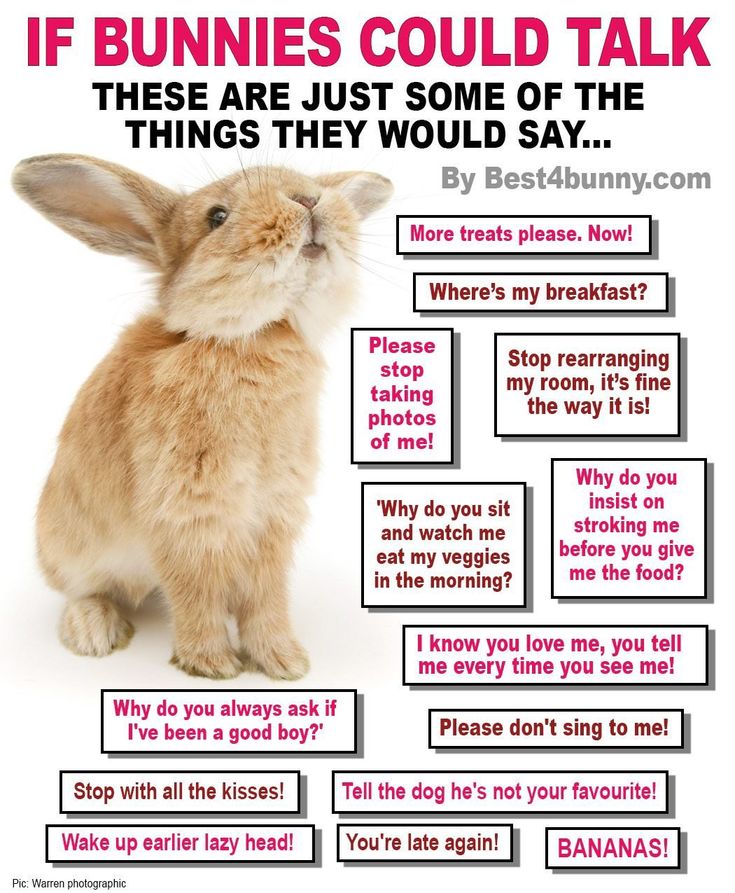
Prices for rabbit cages
Rabbit cage
Nursing female must not be disturbed
How to awaken the maternal instinct
If the female is perfectly healthy and there are no signs of hunting, the problem may lie in the failure of the genetically programmed care for the offspring. This is not safe for the rabbit herself: milk stagnation is an almost ideal starting position for the development of mastitis, with all the ensuing consequences.
Normally, the female, driven by instinct, begins to feed the cubs, but the reverse relationship also works: the forced attachment of the cubs to the nipples starts a natural biological program. This method works in cases where an inexperienced rabbit does not know how to behave with cubs, and this method also helps to prevent or eliminate lactostasis.
Forced feeding eliminates lactostasis
Procedure for force feeding
- Wash hands first with a neutral hygienic agent, put on clean, odor-free work clothes.
 When performing the procedure, you should take into account that the rabbit may be much stronger than you might think, so it is possible that you will need help.
When performing the procedure, you should take into account that the rabbit may be much stronger than you might think, so it is possible that you will need help. - Remove the cubs from the nest, put them in a box, making sure that they are warm.
- Restrict the female's mobility by holding the front and especially the hind legs. If there is no assistant, the paws of the animal will have to be tied.
- The rabbit is held over the baby so that it can reach the nipple. In extreme cases, the female can be laid on her side.
- The rabbit needs to be held tight.
- Alternately apply the rabbits to the udder, starting from the weakest. It takes about 15 minutes for a baby to satiate, it can move from nipple to nipple and loses interest in them after saturation.
- A well-fed cub is returned to the nest or to another box, so as not to be confused with the hungry ones and not to waste time.
- After the end of feeding, the whole family is returned to the cage.

If the female does not show aggression, her access to the cubs is not restricted. It is better to isolate aggressively tuned queens from babies by blocking access to the uterine box. At the same time, it is important that the room where the problem family is kept is warm enough.
Aggressive rabbits need to be isolated from babies
If the problem is only in the sleeping instinct, it is solved quickly, two or three times is enough. While feeding the cubs is carried out forcibly, they are applied at least 2 times a day with an interval of 12 hours. If time permits, or we are talking about especially valuable animals, you can apply more often, but not more than 5 times a day. This is also very important in case of weak lactation, congestion in the mammary glands and in the early stages of mastitis.
How to put baby rabbits to nurse
Sometimes the only correct way out is to put baby rabbits to another lactating female. This is done if there are more cubs in the litter than the mother has teats, with a lack of milk, as well as in cases of illness, death or forced slaughter of the mother. A dairy female with rabbits close in age to the starving litter is selected for the role of nurse. The maximum allowable difference in age is ± 3 days. With a larger gap, the older ones will push the younger ones away from the udder, and they may even die from malnutrition.
A dairy female with rabbits close in age to the starving litter is selected for the role of nurse. The maximum allowable difference in age is ± 3 days. With a larger gap, the older ones will push the younger ones away from the udder, and they may even die from malnutrition.
Babies are transferred to another nest
Procedure for transfer to another queen
- Wash hands, put on clothes without sharp and foreign odors.
- Separate the future nurse from the cubs so that she does not see any further actions with the nest.
- Gently rub the fosterlings' coats with bedding material from the wet nurse's cage moistened with uterine urine.
- Put the cubs in the nest mixed with the nurse's droppings, cover with down.
- Return the female to the cage an hour and a half after the adoption of the adoptees and observe her behavior for some time.
Dried and slightly rumpled mugwort can be placed in the cage to mask possible traces of someone else's smell.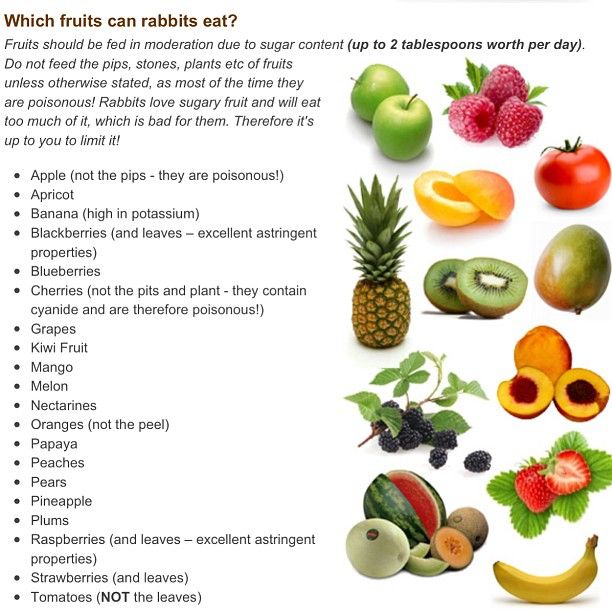 This is possible only if the rabbit is familiar with the aroma of wormwood, otherwise the effect may be unpredictable. If everything went smoothly, the rabbit will feed all the cubs. Otherwise, she will begin to scatter the rabbits and two litters will have to be saved.
This is possible only if the rabbit is familiar with the aroma of wormwood, otherwise the effect may be unpredictable. If everything went smoothly, the rabbit will feed all the cubs. Otherwise, she will begin to scatter the rabbits and two litters will have to be saved.
Rabbits have poor color discrimination and accept babies with different coat colors without problems
Artificial feeding of rabbits
Artificial feeding is not the most desirable method. This is quite troublesome, costly and not as effective as natural feeding. But if the mother has problems with lactation, and there are no candidates for the nurse and is not expected, there is no other way out. It is impossible to delay the decision for a long time, since hungry cubs will die very quickly.
Bottle-fed rabbit
The effectiveness of artificial feeding largely depends on the age of orphaned rabbits. The most difficult thing will be with newborns, since the first portions of the mother's colostrum are not only food, but also the first immune defense of a tiny creature. Therefore, cubs fed by a natural or adoptive mother are physically stronger and more resistant to infections.
Therefore, cubs fed by a natural or adoptive mother are physically stronger and more resistant to infections.
Alternatives to mother's milk
Milk from different animal species differs in nutritional content, and this should be taken into account when choosing a replacement for mother's milk. Ideally, if you can quickly find a mixture for rabbits, but this is not always possible even in a big city. In addition, special blends are not always affordable.
All-Purpose Infant Formula
In descending order of composition similarity, the options are as follows:
- Puppy Formula;
- kitten formulas;
- goat milk;
- mixture of cow's milk with condensed milk in the ratio 3:1;
- cow's milk.
Whole cow's milk is much inferior to rabbit's milk in terms of solids, so it is best used as a last resort.
Kitten formula can be fed
In the absence of alternatives, orphaned rabbits can also be fed infant formula. Changing the mixture during feeding is not recommended, so it is best to use the most affordable food.
Changing the mixture during feeding is not recommended, so it is best to use the most affordable food.
It is not worth seriously considering a cat or a bitch with cubs as a potential nurse. Cases of successful feeding of rabbits by females of other species are quite rare.
Baby rabbit feeding equipment
Tiny newborn babies are best fed with a syringe without a needle. On sale there are special kits for feeding small animals, they can be purchased at a veterinary pharmacy. Older rabbits can drink from a pipette, later from a nipple. By the age of one month, babies are already beginning to lap up milk, like kittens.
Industrial teats
At this time, the pups are old enough to eat grass and some other food, but they continue to feed milk and formula for several more weeks.
Wild rabbits feed offspring for up to three months, in conditions of industrial breeding - up to 45 days. Young animals are transferred to an adult diet according to the general scheme for the economy.
Syringe with feeding nozzle
Feeding
The more accurately you can reproduce the natural process of feeding, the more likely the babies are to come out. The most difficult thing is to accustom the cubs to an artificial udder. At first, the cubs refuse it, so they feed them in smaller portions, but more often than the mother does.
Do not squirt or press the mixture into the baby rabbit's mouth, the baby may choke. It is much safer to lubricate the mouth around the perimeter with a nutrient mixture, and the rabbit licks it off on its own. After one or two feedings, a new skill is formed in the animal, and feedings pass without any problems.
While feeding, the calf is held upright
Older calves are given milk in drops from a pipette, following the recommended volumes. Saturation control does not cause any particular difficulties, the rabbit's tummy is gradually rounded. A fully satiated cub refuses the next portion of the mixture.
Food volumes for rabbits of different ages
| Age | Volume of mixture, ml |
|---|---|
| Less than a week | 5 |
| 1-2 weeks | 5-7 |
| 2-3 weeks | 13 |
| Older than 3 weeks | 15 |
The recommended amount is divided into several feedings, they should be at least 2 with an interval of no more than 12 hours. Feeding is a rather serious burden for a tiny animal, so it is not recommended to feed more often, the kids should rest.
Feeding is a rather serious burden for a tiny animal, so it is not recommended to feed more often, the kids should rest.
Older rabbits are fed from a regular teat
Three-week-old rabbits can be fed hay, dried grass and grated carrots. Give milk mixtures do not stop until the standard weaning age is reached.
Some features of the physiology of rabbits
Rabbits are born blind, naked and unable to independently defecate the bladder and intestines. The administration of the natural physiological needs of the cubs stimulates the departure of the mother. The female licks the cubs, pressing her tongue on the lower part of the body. Excrement and urine are excreted. In the third week of life, the formation of the excretory function ends, and the rabbits defecate on their own. Prior to this, before artificial feeding, the tummy is massaged from top to bottom with a damp warm cloth, imitating the actions of the mother. The massage is continued until the rabbit urinates and empties the intestines. This procedure cannot be neglected, otherwise a rupture of the internal organs or severe intoxication with the end products of metabolism with the inevitable death of the rabbits may occur.
This procedure cannot be neglected, otherwise a rupture of the internal organs or severe intoxication with the end products of metabolism with the inevitable death of the rabbits may occur.
By the age of one month, cubs can drink milk and water from a bowl. The mixture is prepared every day in the amount necessary for feeding, goat milk can be stored for up to 3 days, but only in the refrigerator.
Hands must be clean, formula warm, dishes sterile.
Artificial feeding of rabbits is a difficult task, but doable. This method is successfully used even on large rabbit farms.
Procedure for feeding newborn rabbits
- Wash hands, boil all utensils and utensils necessary for feeding.
- Prepare formula or warm up leftovers from a previous feeding to 38-40 degrees. Pour the part intended for feeding into a dish, from which it is convenient to draw it into a syringe or pipette. Put the dish with the mixture or milk in a bowl of hot water so that the liquid does not cool down.
